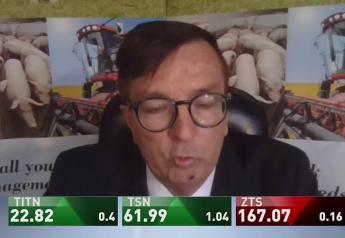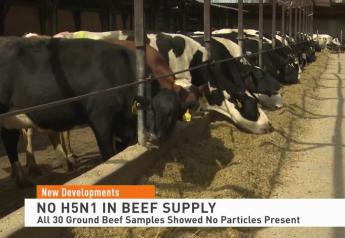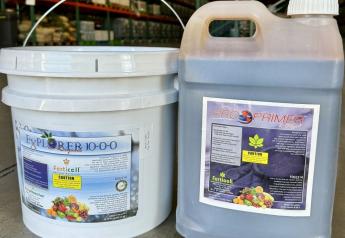The Global Grain Market--One Year After Russia's Invasion of Ukraine

Early in the morning of February 24, 2022, the Russian government launched an invasion of its neighbor Ukraine across multiple lines of attack, expecting to over-run the country in a matter of days or weeks. This military action roiled global markets of all types, especially markets for grains, oilseeds, and fertilizer, because of the large role in trade flows for those products previously occupied by Ukraine, Russia, and its close ally Belarus.
In the year prior to the invasion, Russia and/or Ukraine ranked among the top three global exporters of wheat, barley, corn, rapeseed and rapeseed oil, sunflower seed and sunflower oil. The Russian Federation also ranked as the world’s top exporter of nitrogen fertilizers, the second leading supplier of potassic fertilizers and the third largest exporter of phosphorus fertilizers. As a direct result of the Russian invasion, Ukraine’s agricultural exports ground almost to a halt for several months, while Russia’s grain and fertilizer exports have also been affected due to an array of sanctions.
On a value basis, wheat and corn were the third- and fourth-most widely agricultural traded commodities in the world in 2019, according to data reported by the UN’s Food and Agriculture Organization (FAO), behind only soybeans and boneless beef. Within a week or so after the invasion, the global price of these crops spiked by 43 percent and 14 percent respectively.
Even though Russian forces had to withdraw from several regions of the country in the spring of 2022, fierce fighting continues in the southeastern section of the country, and bombing attacks from missiles and drones continue to strike the rest of Ukraine on a regular basis. The country’s economy continues to suffer greatly from the disruption of the civilian transportation and utility services caused by the bomb damage and mines left behind by Russian troops. The World Bank estimates that Ukraine’s Gross Domestic Product (GDP) fell 20 percent between 2021 and 2022, and Ukraine’s agricultural output has been impacted by lack of access to inputs, and bomb damage to fields, facilities, and equipment. After the Russian withdrawal from the Kyiv region, the Ukrainian military deployed troops to check 300,000 hectares of crop land for mines before it could be safely planted with spring crops.
In the first several months after the invasion, the Russian navy was effectively blockading grain shipments out of Ukraine’s Black Sea ports. Modest amounts of grain exports were able to move overland via rail or truck, but it amounted to only a fraction of the country’s normal trade flows. On July 27, 2022, a deal between Russia and Ukraine to allow resumption of grain shipments through the Black Sea was reached, brokered by the government of Turkey and the United Nations (UN).
As of January 2023, over 18 million metric tons of grain and other foodstuffs have been exported via the Black Sea Grain Initiative. Just under half (46 percent) of the cargo was maize (corn), which was the grain most affected by blockages in Ukrainian granaries at the beginning of the war. In recent weeks, the amount of grain departing Ukrainian ports has slowed–under the deal, food exports from three Ukrainian ports have dropped from 3.7 million metric tons in December to 3 million metric tons in January. Ukrainian officials accuse their Russian counterparts–staff from Russia, Ukraine, and Turkey jointly inspect ships to make sure they contain only grain–of deliberately delaying the process. Negotiations are scheduled to occur this week in an effort to extend the deal for several additional months.
As of late February 2023, global prices for both wheat and corn have declined considerably from their immediate post-invasion peaks, 14 percent below the year-ago price for wheat and 3 percent above the year-ago price for corn. Even with Ukrainian supplies inaccessible to the global market for several months during 2022, overall wheat exports for the 2021/22 marketing year were reduced less than one percent compared to the previous year. The 2021/22 wheat marketing year was from July 1, 2021 to June 30, 2022, so it encompassed most of the reduced export period for Ukraine. Wheat exports are projected to increase by 4.3 percent for 2022/23, according to USDA’s monthly World Agricultural Supply and Demand Estimates (WASDE) report issued on February 8th. Increased wheat production is expected from both Russia and Australia. As a country in the southern hemisphere, Australia’s 2022/23 wheat crop was just harvested.
On the other hand, global coarse grain exports (mainly corn) are expected to decline by 12 percent in 2022/23 as compared to the previous marketing year, with the biggest drops coming from the United States and Ukraine. The reduction in U.S. exportable supplies of corn stemmed primarily from a nearly five-million acre decline in planted corn acres for the 2022/23 crop year compared to the previous crop year, as well as a slightly lower national average corn yield.
Even though grain prices are no longer at such elevated levels, the disruption to world grain trade flows from Russia’s invasion of Ukraine contributed to an ongoing food security crisis, especially in Sub-Saharan Africa, which also is facing agricultural production shortfalls due to the impacts of climate change and conflict in several countries, as well as the higher cost of fertilizer. According to the UN’s World Food Program (WFP), which bought a lot of Ukrainian grain prior to the invasion, these factors drove an additional 60 million people globally into acute food insecurity in 2022, and increased WFP’s monthly operating costs by 44 percent compared to 2019.







